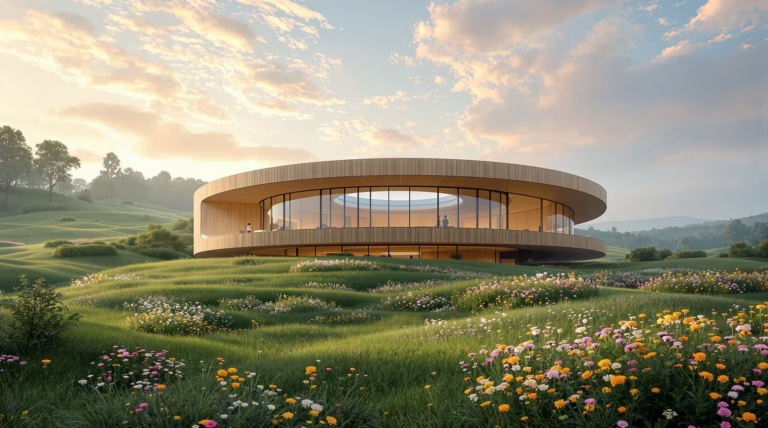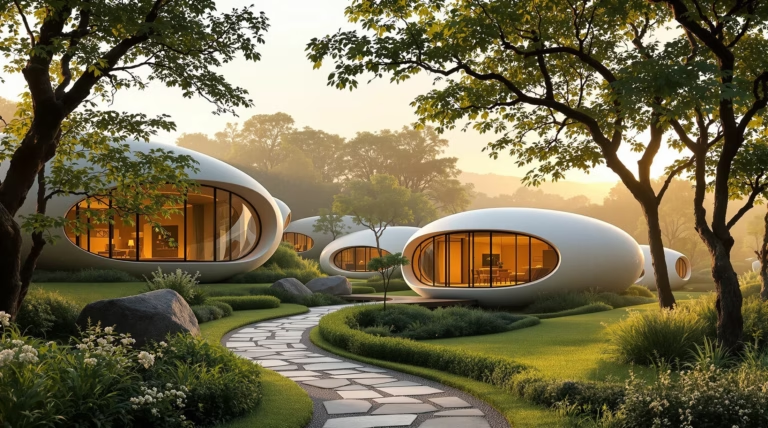Rustic Hunting Cabin: Design Ideas and Inspiration
Discover the timeless allure of rustic hunting cabins, where wilderness meets comfort in perfect harmony. Whether you’re planning to build your own retreat or seeking inspiration for your existing space, this guide explores the essential elements that make these cabins both functional and deeply connected to nature.
Rustic hunting cabins represent more than mere shelters in the wilderness—they embody a timeless connection to nature and tradition that resonates with outdoor enthusiasts and hunters alike. These log cabin designs merge functionality with rugged charm, creating retreats where modern life’s complexities fade into the background. With weathered wooden beams, natural stone accents, and utilitarian design, these cabins serve as both practical hunting bases and soul-soothing sanctuaries.
The essence of hunting lodge decor stems from a deep appreciation for authenticity and craftsmanship. Unlike polished vacation homes, rustic hunting cabins celebrate imperfection—showcasing hand-hewn logs, locally sourced materials, and design elements that tell a story. These intimate spaces offer a place where adventurers can rest after a day in the field, share stories around a crackling fire, and reconnect with simpler pleasures.
What Defines a Rustic Hunting Cabin?
A rustic hunting cabin is characterized by its emphasis on natural elements, functional simplicity, and integration with its surroundings. Unlike conventional homes, these cabins typically feature log construction with exposed wooden beams, creating a warm, sheltered atmosphere that feels harmonious with the wilderness outside.
- Unfinished or reclaimed wood surfaces
- Hand-forged metal fixtures
- Multi-functional living spaces
- Off-grid elements like rainwater collection systems
- Composting toilets or solar panels
The Appeal of Rustic Design in Cabins
The enduring appeal of rustic interior design lies in its authentic connection to place and purpose. This aesthetic celebrates natural materials in their most honest form, creating environments that feel grounded and genuine. Rough-cut timber walls, stone fireplaces, and handcrafted furniture pieces establish spaces that contrast sharply with modern, mass-produced environments.
| Design Element | Purpose |
|---|---|
| Natural textiles (wool, leather, cotton) | Add warmth without pretension |
| Antlers and vintage hunting equipment | Serve as meaningful decorative elements |
| Locally inspired artwork | Creates personal connection to surroundings |
Design Elements of a Rustic Hunting Cabin
The quintessential rustic hunting cabin draws its charm from thoughtfully selected design elements that blend form and function in harmony with nature. Log construction forms the backbone of these retreats, with each timber telling its own story through knots, grain patterns, and weathered textures.
Incorporating Natural Materials
Natural materials form the cornerstone of authentic rustic cabin design, with each element contributing to both aesthetic appeal and structural integrity. Logs harvested from local timber create walls that breathe with the seasons, while stone foundations and chimneys ground the structure and create visual contrast against wooden elements.
- Hardwood or wide-plank pine flooring
- Rough-sawn ceiling beams
- Local stone for foundations and chimneys
- Natural textiles for warmth and comfort
- Organic decorative features
Essential Features: Wood-Burning Stoves and Bunk Beds
At the heart of every rustic hunting cabin sits a wood-burning stove, serving as both a practical necessity and symbolic centerpiece. These cast-iron workhorses efficiently transform locally harvested timber into radiant warmth that penetrates the cabin’s structure during cold hunting seasons. Beyond heating, wood stoves create a natural gathering point where hunters warm chilled hands, dry damp clothing, and share tales of their adventures. The ritual of tending the fire becomes an integral part of cabin living, connecting occupants to age-old traditions.
- Efficient heating for remote locations
- Natural gathering point for socializing
- Practical surface for drying gear
- Traditional fire-tending rituals
- Source of cooking heat when needed
Space optimization defines the sleeping quarters, with bunk beds serving as the quintessential solution. These efficient arrangements maximize limited square footage while creating separate zones for individual hunters. Built-in bunks, constructed from sturdy timber frames secured to wall structures, eliminate the need for bulky furniture. Many designs incorporate clever storage solutions beneath lower bunks or integrated shelving alongside sleeping areas. For extended hunting parties, Murphy beds or convertible seating provide additional sleeping capacity without permanently dedicating space to rarely-used beds.
Creating a Cozy Atmosphere with Cabin Decor
| Decor Element | Function |
|---|---|
| Thick wool area rugs | Floor insulation and visual warmth |
| Flannel bedding | Comfort and temperature regulation |
| Oil lamps and candles | Traditional ambient lighting |
| Metal sconces | Task lighting with rustic appeal |
| Vintage hunting implements | Authentic wall decoration |
The art of creating warmth within a hunting cabin extends beyond physical heat, emerging from thoughtful decor choices that enhance comfort while maintaining authentic character. Layered textiles play a crucial role, with natural materials providing both insulation and visual interest. Lighting deserves special attention, as the quality of illumination dramatically affects ambiance. Personal touches—perhaps a collection of found antlers or a logbook documenting memorable hunts—transform functional shelter into a narrative space that holds stories and traditions.
DIY Hunting Cabin: Personalizing Your Space
Creating your own DIY hunting cabin offers a unique opportunity to craft a space that perfectly reflects your hunting lifestyle and personal aesthetic. Unlike pre-designed hunting lodges, a DIY approach allows you to customize every element—from the basic structure to the smallest decorative touches. The beauty lies in its adaptability to individual preferences, budgets, and skill levels, whether you’re building from the ground up or renovating an existing structure.
Planning Your DIY Cabin Project
- Assess hunting needs and group size
- Create detailed blueprints and floor plans
- Research local building codes and permits
- Set realistic budget parameters
- Source reclaimed materials when possible
- Plan for future expansions
Incorporating Modern Amenities in a Rustic Setting
Modern hunting cabins strike a thoughtful balance between rustic authenticity and contemporary convenience. Solar panel systems can power essential lighting and small appliances without compromising wilderness ambiance. Water systems, from gravity-fed collection to compact on-demand propane heaters, enhance comfort while maintaining efficiency. The key lies in concealing these modern elements behind rustic facades, delivering comfort without sacrificing authentic atmosphere.
Exploring Cabin Lifestyle and Architecture
The cabin lifestyle represents a unique intersection of architectural tradition and natural living that continues to captivate those seeking respite from modern complexities. Log homes, with their sturdy construction and timeless appeal, serve as the architectural backbone of the rustic hunting cabin experience. These structures embody a philosophy that values simplicity, self-sufficiency, and harmony with the surrounding environment.
- Carefully positioned windows frame forest views
- Open layouts facilitate natural gathering spaces
- Architectural elements enhance nature connection
- Meaningful lifestyle choice influencing year-round values
- Opportunity for genuine disconnection from digital world
The Connection Between Cabin Living and Nature
Unlike conventional homes that often insulate occupants from the natural world, hunting cabins deliberately thin the boundary between indoor and outdoor environments. The strategic placement of cabins—whether nestled among pine forests, perched along ridgelines, or tucked beside mountain streams—enhances this relationship, allowing occupants to experience changing seasons, wildlife movements, and weather patterns with remarkable intimacy.
| Natural Experience | Psychological Benefit |
|---|---|
| Birdsong through wooden walls | Stress reduction |
| Gathering firewood | Connection to natural resources |
| Wildlife observation | Mental clarity |
| Natural daylight cycles | Improved sleep patterns |
| Forest sounds | Enhanced relaxation |
Seasonal Use and Adaptations for Hunting Cabins
- Hunting season features:
- Mud rooms for gear removal
- Ventilated game processing areas
- Secure equipment storage
- External hooks and cleaning stations
- Summer adaptations:
- Hammock installations
- Outdoor cooking areas
- Simple shower structures
- Winter modifications:
- Enhanced insulation
- Accessible wood storage
- Winter sports equipment storage
Inspiration and Ideas for Your Rustic Hunting Cabin
A thoughtfully designed hunting cabin balances authenticity with functionality, creating spaces that honor traditional craftsmanship while meeting specific hunting and relaxation needs. The best designs combine elements from various sources—historical hunting lodges, contemporary rustic architecture, and personal preferences—to create meaningful spaces that connect with both hunting traditions and the natural world.
Exploring Design Ideas on Pinterest
- Key Pinterest search terms:
- Rustic tiny house
- Log cabin living
- Small cabins
- Rustic homes
- Traditional hunting lodges
- Design categories to explore:
- Exterior architecture
- Interior finishing details
- Storage solutions
- Reclaimed material usage
- Modern-rustic blends
The rustic hunting cabin community thrives through digital connections, creating a rich ecosystem of knowledge sharing and mutual support. These virtual gathering spaces include specialized forums, social media groups, and dedicated websites where enthusiasts exchange practical insights beyond typical design inspiration.
- Community benefits:
- Real-world troubleshooting advice
- Material sourcing recommendations
- Seasonal maintenance strategies
- Direct experience sharing
- Local resource connections
| Platform | Primary Value |
|---|---|
| Online Forums | In-depth technical discussions |
| Social Media Groups | Visual inspiration and quick tips |
| Reddit Communities | Diverse perspectives and trends |
| Specialized Websites | Comprehensive guides and resources |
Beyond practical knowledge exchange, these communities foster meaningful connections among cabin enthusiasts who share a passion for rustic living and hunting traditions. Members often collaborate on problem-solving, share resources, and occasionally organize in-person gatherings. By documenting and sharing individual cabin journeys through photos, blog posts, and social media, participants contribute to a growing collective knowledge base that preserves traditional wisdom while embracing contemporary approaches to rustic design.







